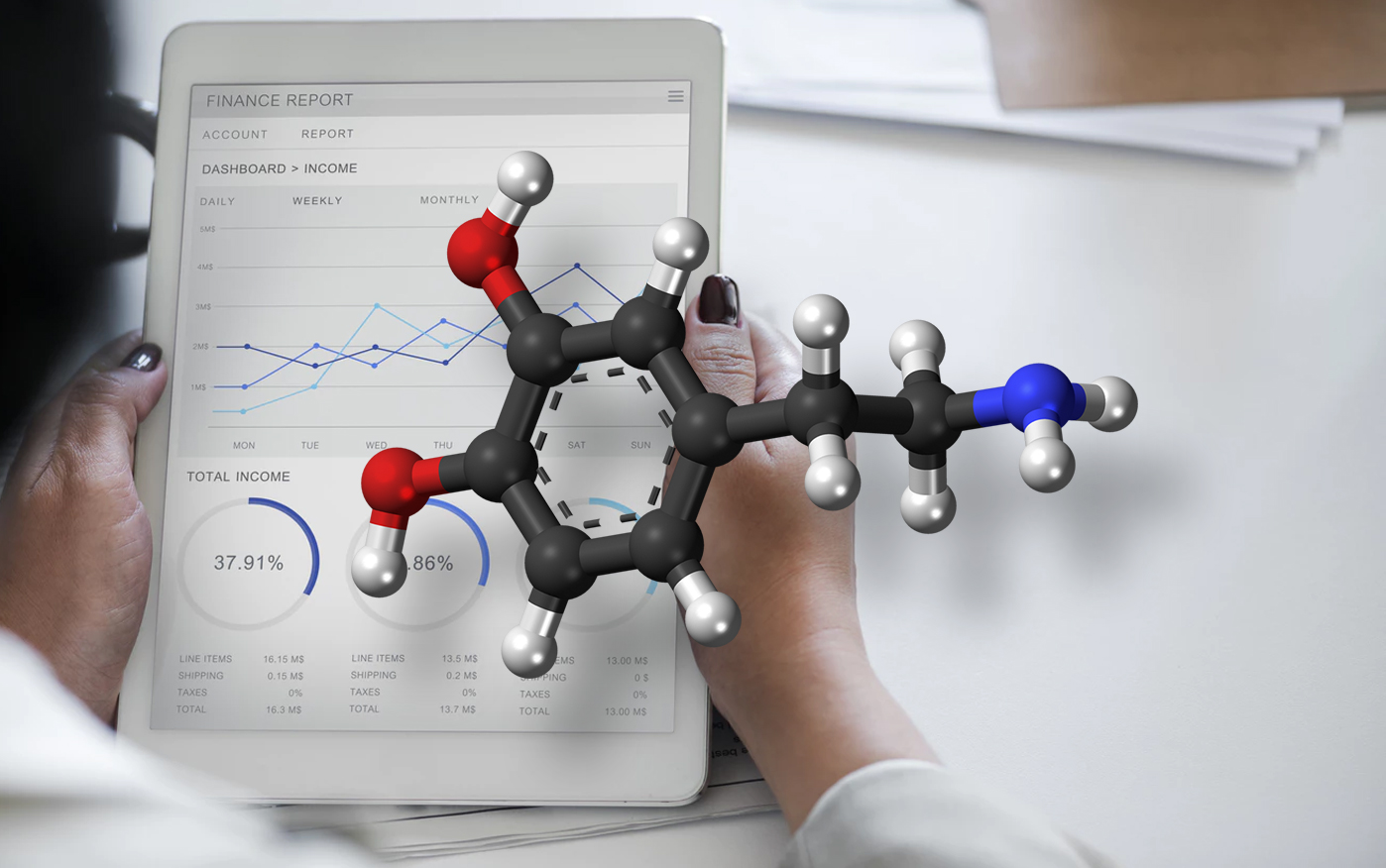
We will find out how this neurotransmitter can benefit your employees’ motivation through gamification
What is dopamine and what does it do?
Dopamine is a neurotransmitter of our central nervous system and it is considered as the main pleasure centre of our brain. It is synthesized during pleasurable situations and it increases our blood pressure in order to produce a feeling of well-being. This way, our body repeats the behaviour that has led to this pleasant feeling, which means that motivation and the desire to obtain it again are increased. The secretion of dopamine plays a key role in the control of focus, attention, locomotion, learning, and working memory. So this is why we talk about gamification and dopamine.
Games make our dopamine levels to spike because our brain releases it in response to the challenge of the game and the achievement of the goal. This is the reason why playing is so attractive.
The release of dopamine is produced in a specific area of our brain known as the reward system. This group of neural structures is the responsible of the pleasant feelings that will encourage us to repeat the attitudes or the actions that produced this feeling, so they will become part of our behaviour. The reward system is a mechanism developed by our brain during human evolution to ensure the survival of the species (this is directly related to the satisfaction of basic needs such as food or sex), and it also helps us to react to new situations. If a situation generates pleasure we will repeat it, but if not, we will avoid it.
The three roles of dopamine in gamification
Dopamine stimulates three attitudes in gamification:
- Motivation: the energy that makes us to achieve goals, either consciously or unconsciously. The dopamine produced by the reward system in response to the game stimulates our motivation, and it encourages players to carry out the tasks established in the gamification.
- Repetition: our body instinctively tends to repeat actions or situations that generate dopamine. With gamification, it is possible to add pleasure or satisfaction to activities that are not naturally attractive, so this way we will encourage our brain to repeat them.
- Learning: the acquisition of new patterns of behaviour through practice is related to the conscious and unconscious rewards that we receive when we perform them. Dopamine is released after redundantly performing actions, so this will make our brain to perceive them as something positive. Gamification helps to incorporate desirable behaviours in our brain in a pleasant way.
What dopamine can (and cannot) do in our gamifications
Besides encouraging motivation, which improves productivity and offers better results, gamification in professional environments improves other positive dynamics directly related to dopamine.
- Feeling of independence and autonomy. The interest and motivation of taking part in the gamification increases, since participation is not compulsory but a voluntary decision. Both feelings are directly related to the release of dopamine.
- Task renewal and improvement of their perception. Our brain releases more dopamine with new experiences and less with repetitive situations, so linking the professional tasks to new (or fictitious) goals will renew them and will make them more appreciated and attractive.
- Feeling of risk and competition. These both feelings, in a safe environment such as a game, are perceived as something pleasant in our brains. One part of the feeling of risk is related to the competitors, the people who are better than you or who may defeat you. This is the reason why risk and competition in gamification encourage the production of dopamine and, consequently, they improve the pleasure of carrying out the tasks established in the game.
It is important to keep in mind that gamification is not effective on its own when goals are too ambitious in the long term. It does not work either if those goals are not aligned with the real interests of the players. Gamification is an excellent tool for defined, achievable, assessable, desired, and short-term goals.
Playmotiv’s experience
We cannot measure the increase of dopamine in our players’ brains, but we can perceive the changes in their productivity. Thanks to our gamifications, we have seen that sales increase up to 20%, and active participation rates are above 70%. Besides, our games are generally rated above 9.5 points. All this shows that employees and companies are more than satisfied. In other words, they are bursting with dopamine.

